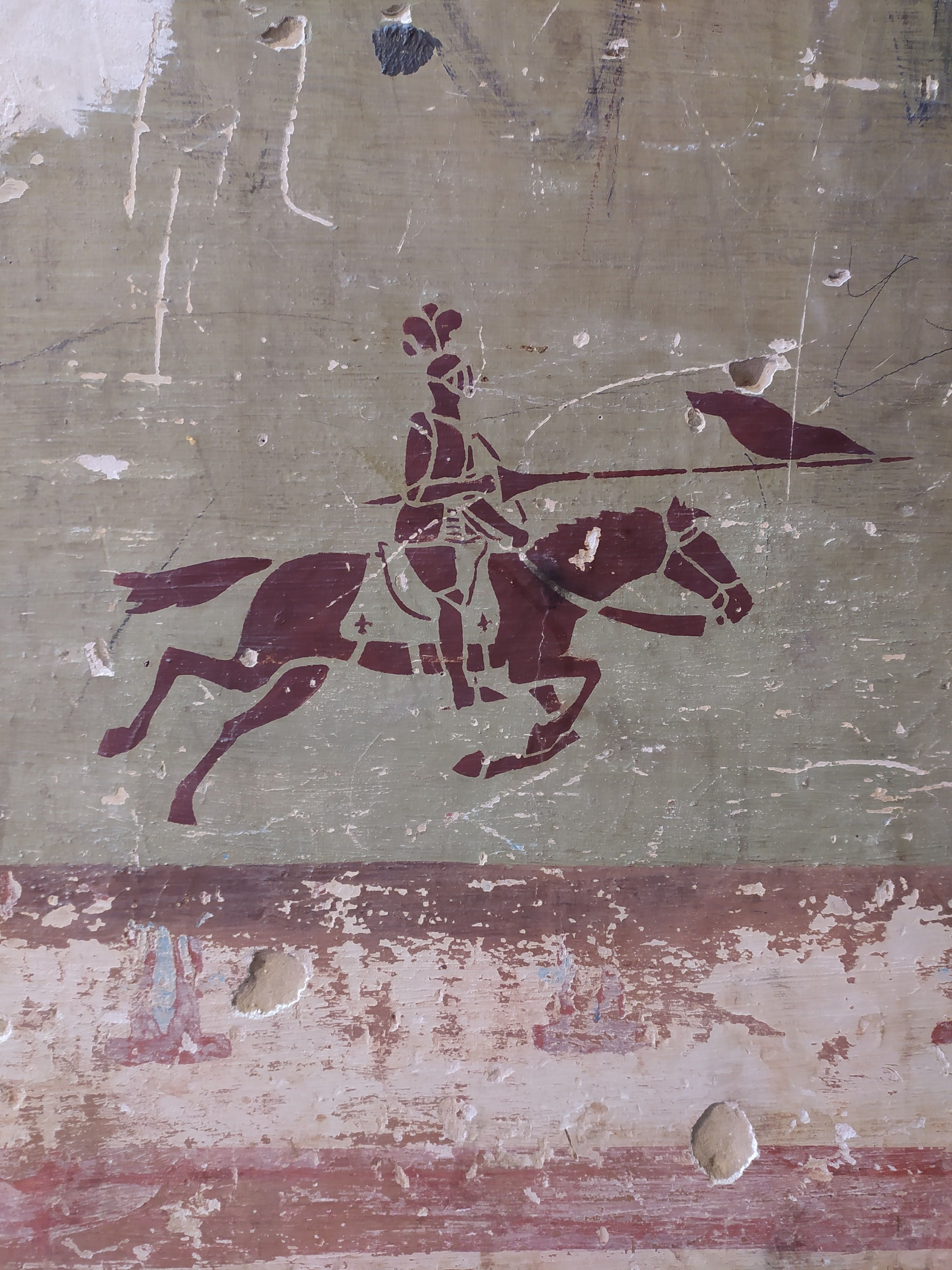Frescoes by Hergé protected
“During the last Heritage Days we observed a lot of Brusselaars and fans of Hergé who were interested in admiring his frescoes. And rightly so, because the murals are among Hergé’s first works. And so we decided to protect the frescoes to ensure that everyone can come look at them in the future. And on top of that is the link with the local scouts, which gives a nice Brussels touch to this new piece of heritage,” says state secretary for Heritage Pascal Smet.
The Royal Institute for Cultural Heritage (KIK-IRPA) made an inventory and a description of the preventive protection measures for the murals, which it has sent to the owner of the property so that he can take the necessary precautions. It also judged that the drawings are relatively well preserved. Reinforcement and fixing works had to be planned.
Why protect?
The historical and artistic importance of the “Institut Saint-Boniface” Scout hall is the result of its 1922 stencil decor. Philippe Godin, expert of Hergé’s (Georges Rémi) work, attributed the decor to the artist because of its stylistic similarity to his work in his youth. Although the stencil motifs can be reproduced, that does not make them less original and diverse, which also gives the work an artistic importance.
At that time, the scouting magazine of Institut Saint-Boniface, “Jamais Assez”, had already published Hergé's first drawings. From 1923, he started drawing for the monthly magazine “Le Boy-Scout belge”.
History of the building:
In the former Scout hall of Institut Saint-Boniface, an original decoration has been preserved, applied with a stencil and dating back to the 1920s, when Hergé, with patrol name “curious fox”, was a member of the Scout Group.
The decoration of the room is structured around a large map of Belgium, showing where the group camped between 1921 and 1923 and what the main excursion destinations were. The decoration, made with a stencil, consists of three friezes demarcating the registers and highlighting the door and window openings and the imitation chimney. About a metre from the ground, the first frieze depicts a procession of knights who are bringing their warhorse to a gallop, ready for battle.
A second frieze stretches along the ceiling with a chain of scout figures and Indians chasing each other on all fours and in the same position. Below this frieze, an inscription in Morse code refers to the group’s founding documents. Above each door there are two groups of three scouts with their backs to each other. They are firmly holding the ropes hanging from either side of the door frame, on which their companions are clambering. The same scout figures climb up the chimney, while the fireplace itself is decorated with imitation tiles with an arrowhead motif or a cross potent.








